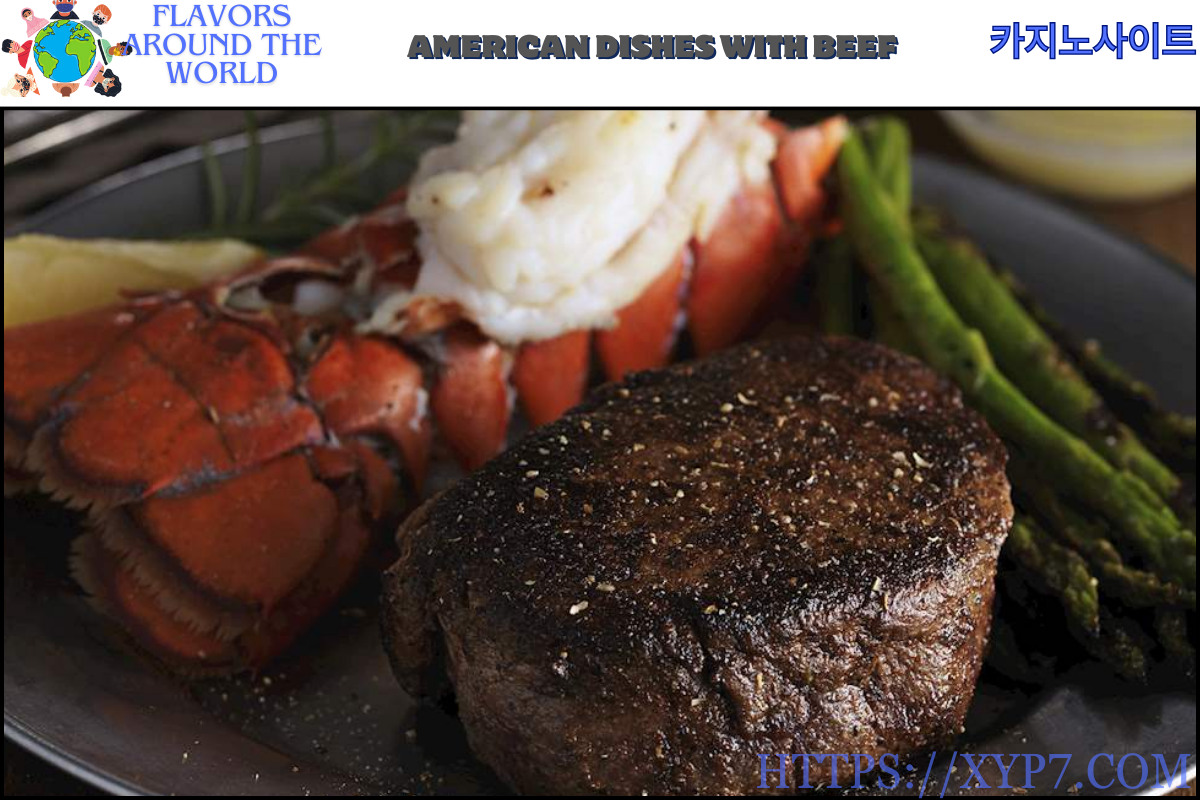AMERICAN DISHES WITH BEEF
Although entrecôte is a cut of beef steak that is placed between the ribs. Rib-eye steaks are thinner and without bones. The six leftover boneless steaks from the meat in between each bone-in rib-eye are referred to as the entrecôtes. The butchers cut bone-in rib-eyes with the bone on each side.
These thin pieces work well for rapid cooking over high heat on the grill or in a skillet. But it’s crucial to avoid overcooking them. The steaks have a lot of marbling and are juicy and tender. In France and throughout Europe, this piece of meat is called entrecôte, which translates to “between the ribs.”
RELATED: The Ultimate Recipe for Nashville Hot Chicken
Turf and Surf
A surf and turf can consist of many different dishes, but it is typically an entrée that has both a piece of beef and a portion of fish. While the seafood could be anything from lobster to shrimp or prawns, the beef is typically a steak.
It’s difficult to determine the roots of surf and turf, but in the 1960s, steak and seafood dishes spread across the country. Depending on the type of seafood, it is commonly grilled, fried, baked, or boiled. The flesh is normally served grilled and accompanied by a thick sauce.
Delmonico Steak
The Delmonico steak, which dates back to between 1840 and 1850, is a mystery that many find confusing. Your order at one restaurant could not be the same at another. Regarding this steak, and whether it is sirloin, bone-in or -out, or any other expensive cut of beef, a number of food historians and critics have expressed varying views.
Even though the preparation procedure has been certified by both of the founding chefs de cuisine of Delmonico Restaurant in New York City, there is still a small difference between them. When you place an order for a Delmonico steak at Delmonico’s today, you will receive a boneless rib-eye steak that has been removed from the broiler and coated with butter and beef fat.
Burned Out Ends
Kansas City is the source of the wonderful specialty known as burnt ends. The term describes the oddly shaped, harder, fattier end bits of barbecued brisket that were offered to diners for free or served as appetizers in stews.
Melted fat is captured by these smokey charred ends during the barbecuing process, giving them an intense flavor. These days, you can find them on most menus in the city, typically served cubed or covered in barbecue sauce. Additionally, burned ends can be added to sandwiches or paired with french fries and baked beans.
Porterhouse
A huge, thick cut of beef from the back end of the short loin is called a porterhouse steak.
It is most frequently connected to American and British cuisines, yet it is not connected to any one nation of origin. The reason it is called “porterhouse” is that, historically, it was served in 18th-century porterhouses, which were taverns or eateries that specialized in serving porter beer 카지노사이트.
